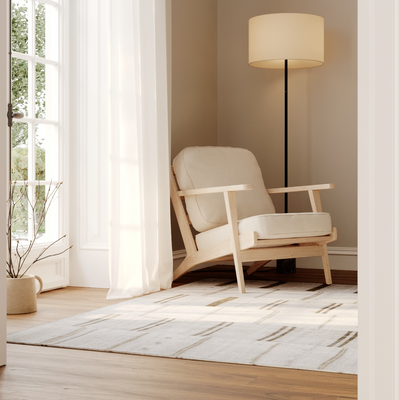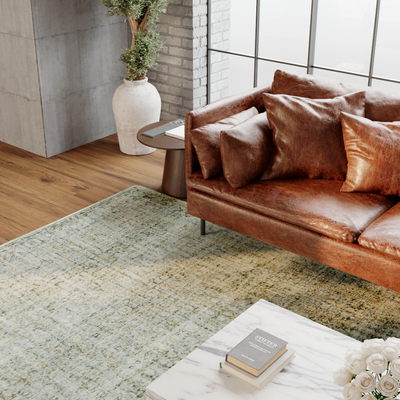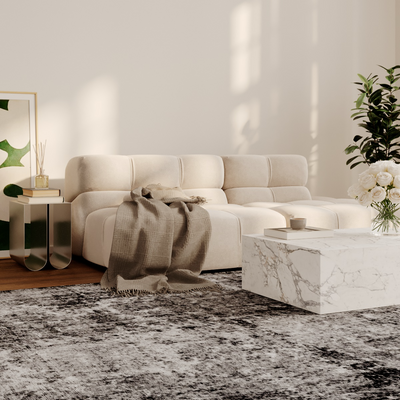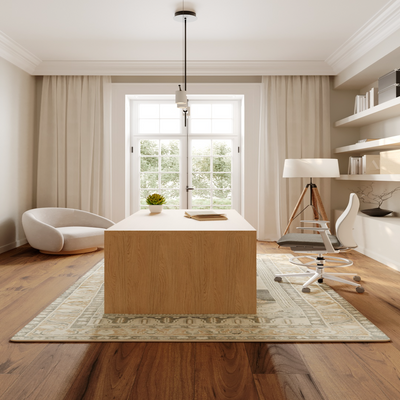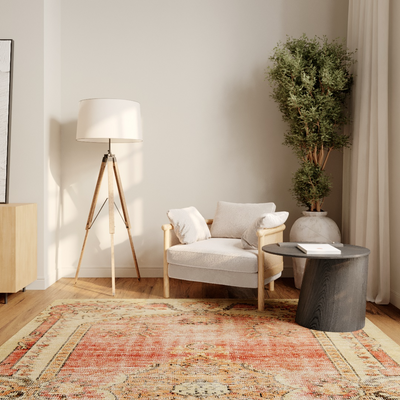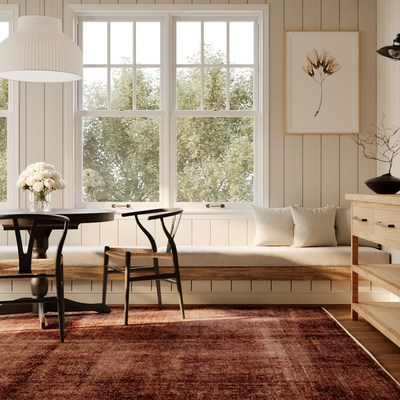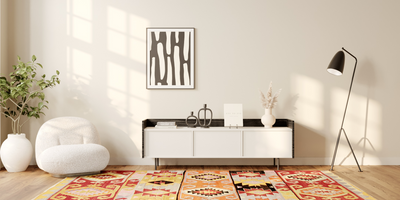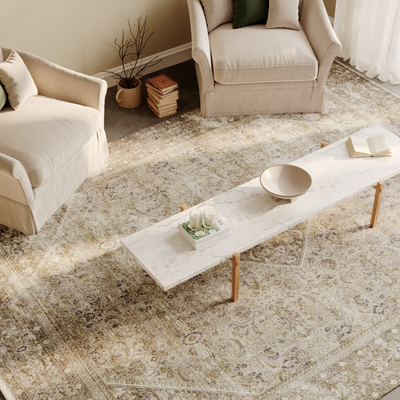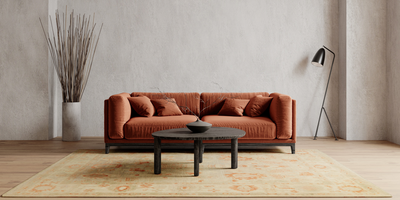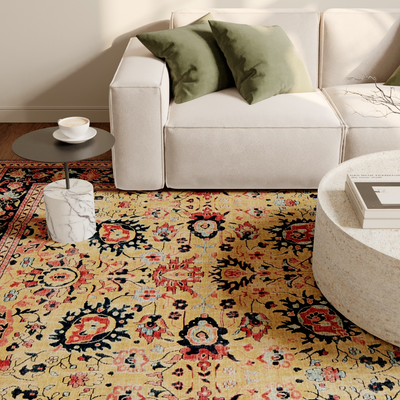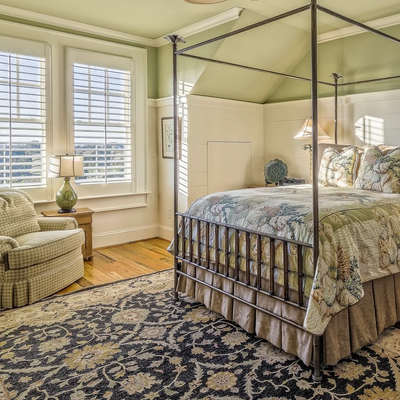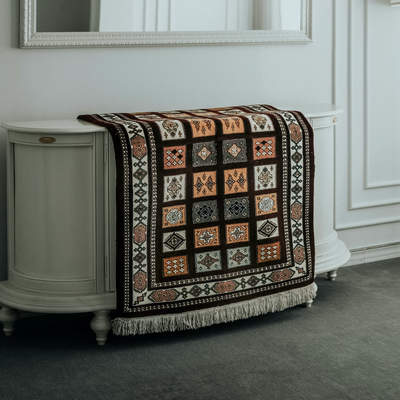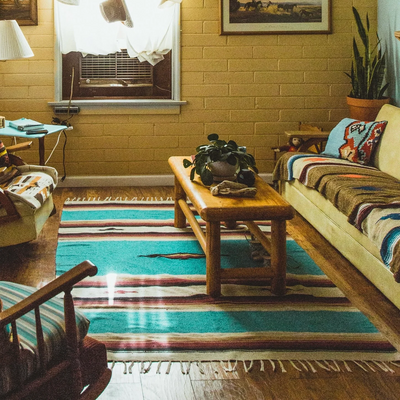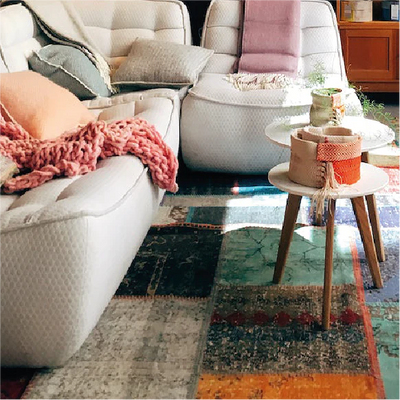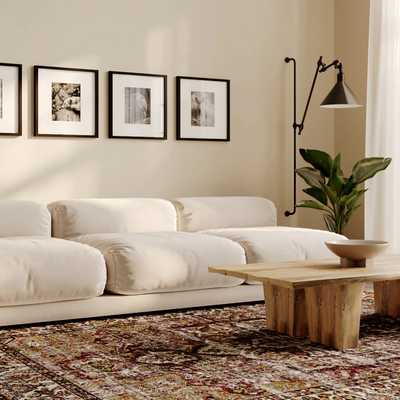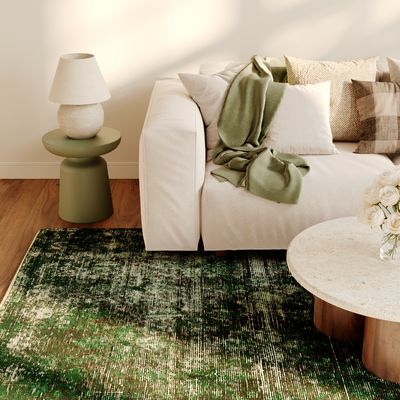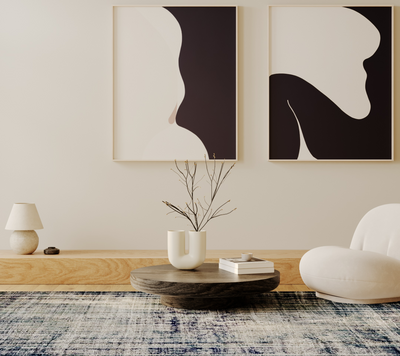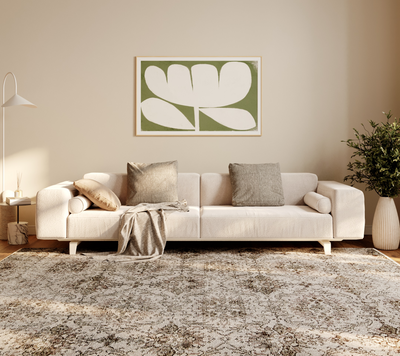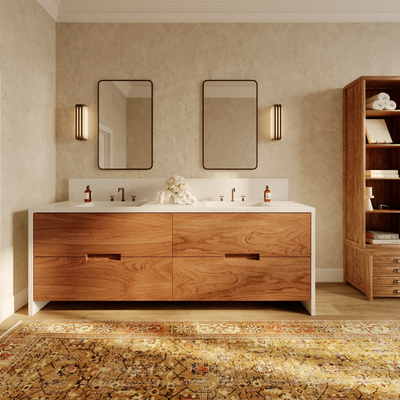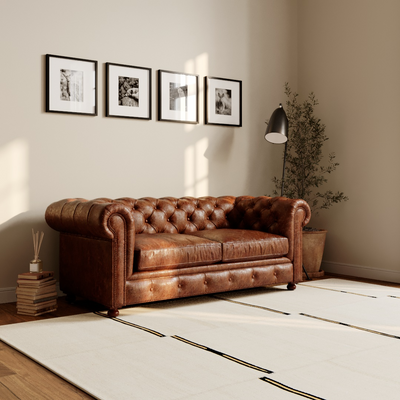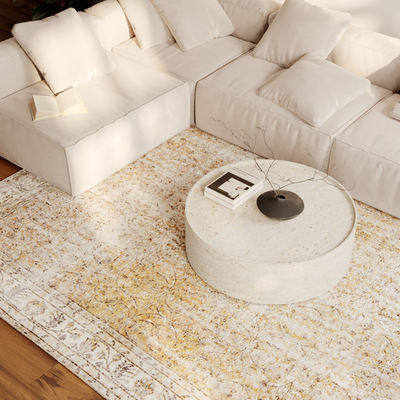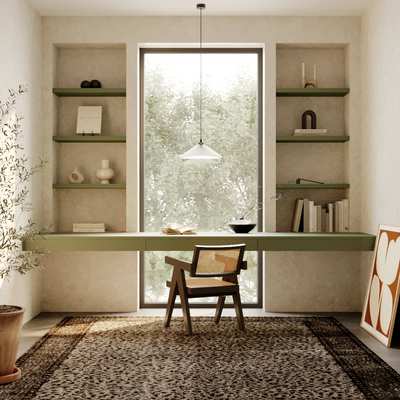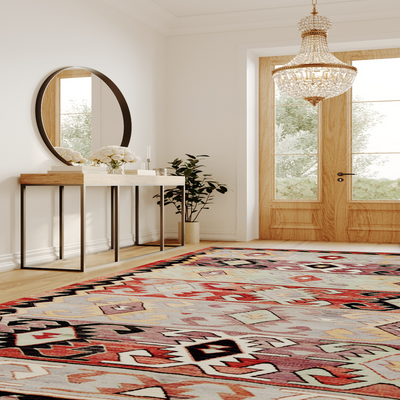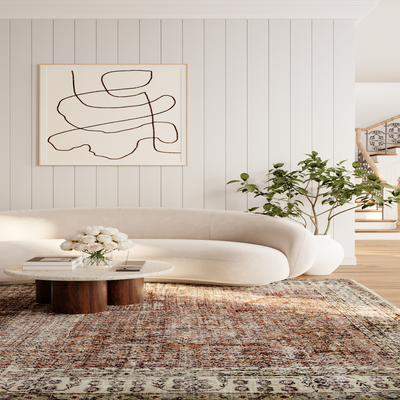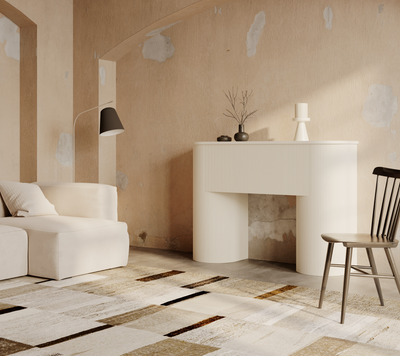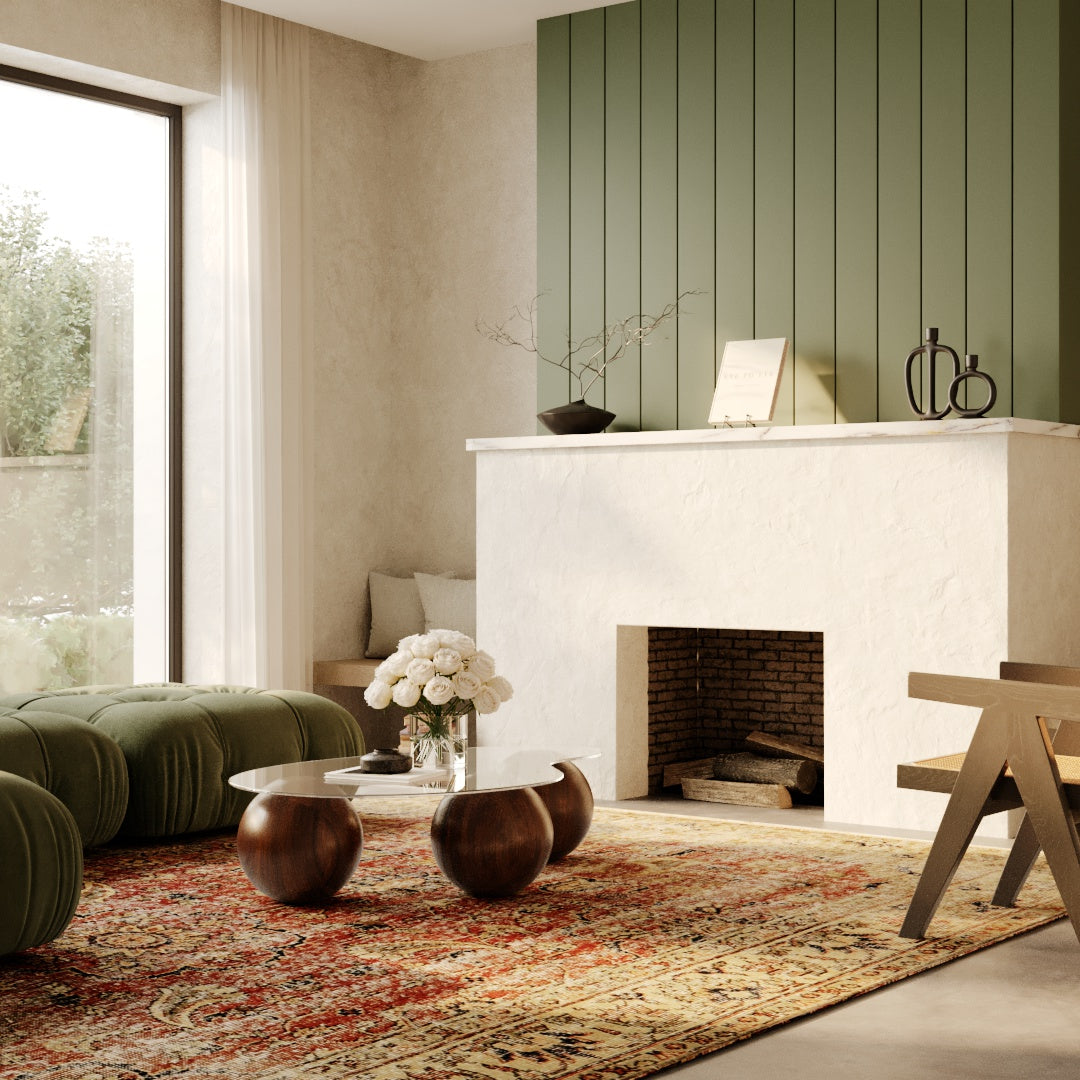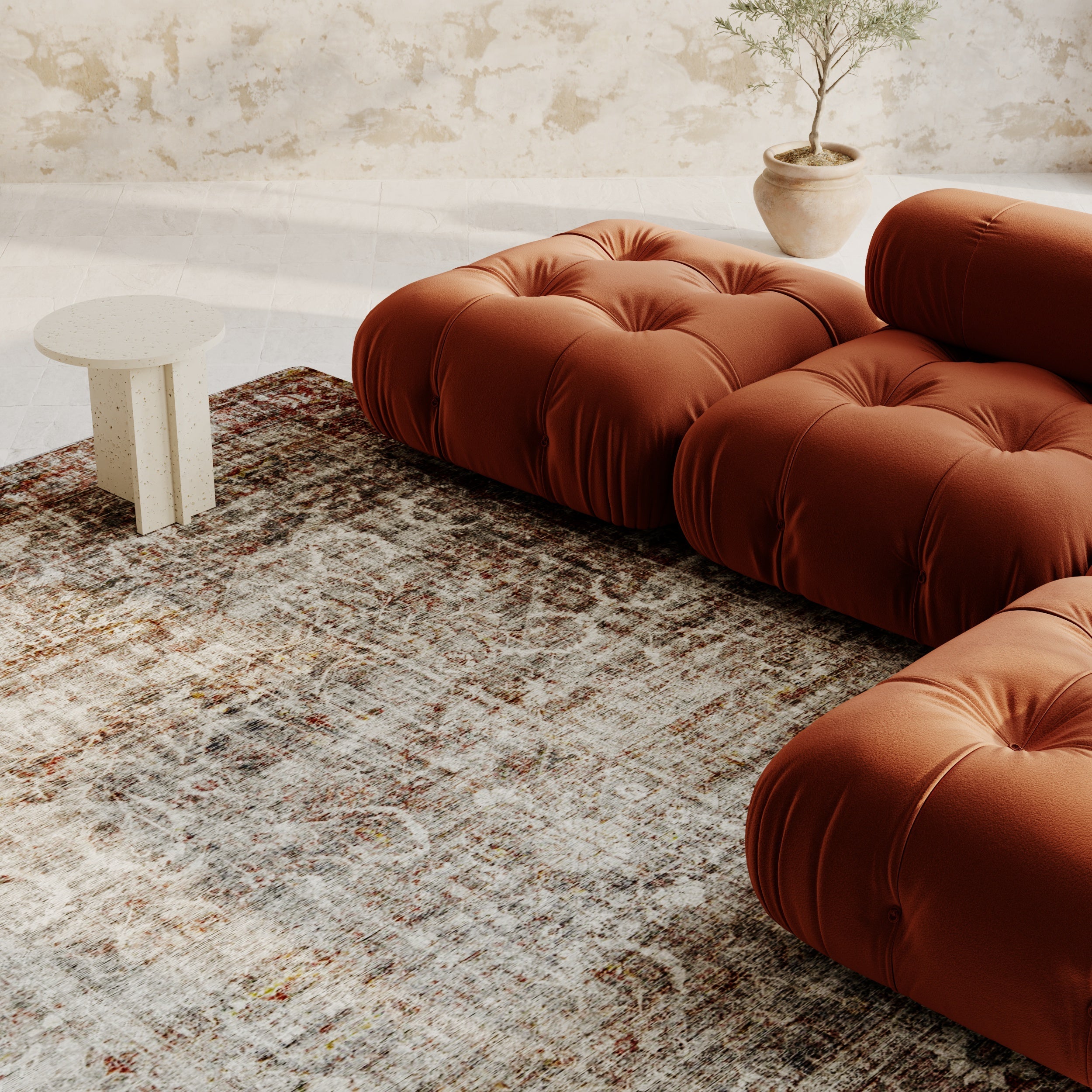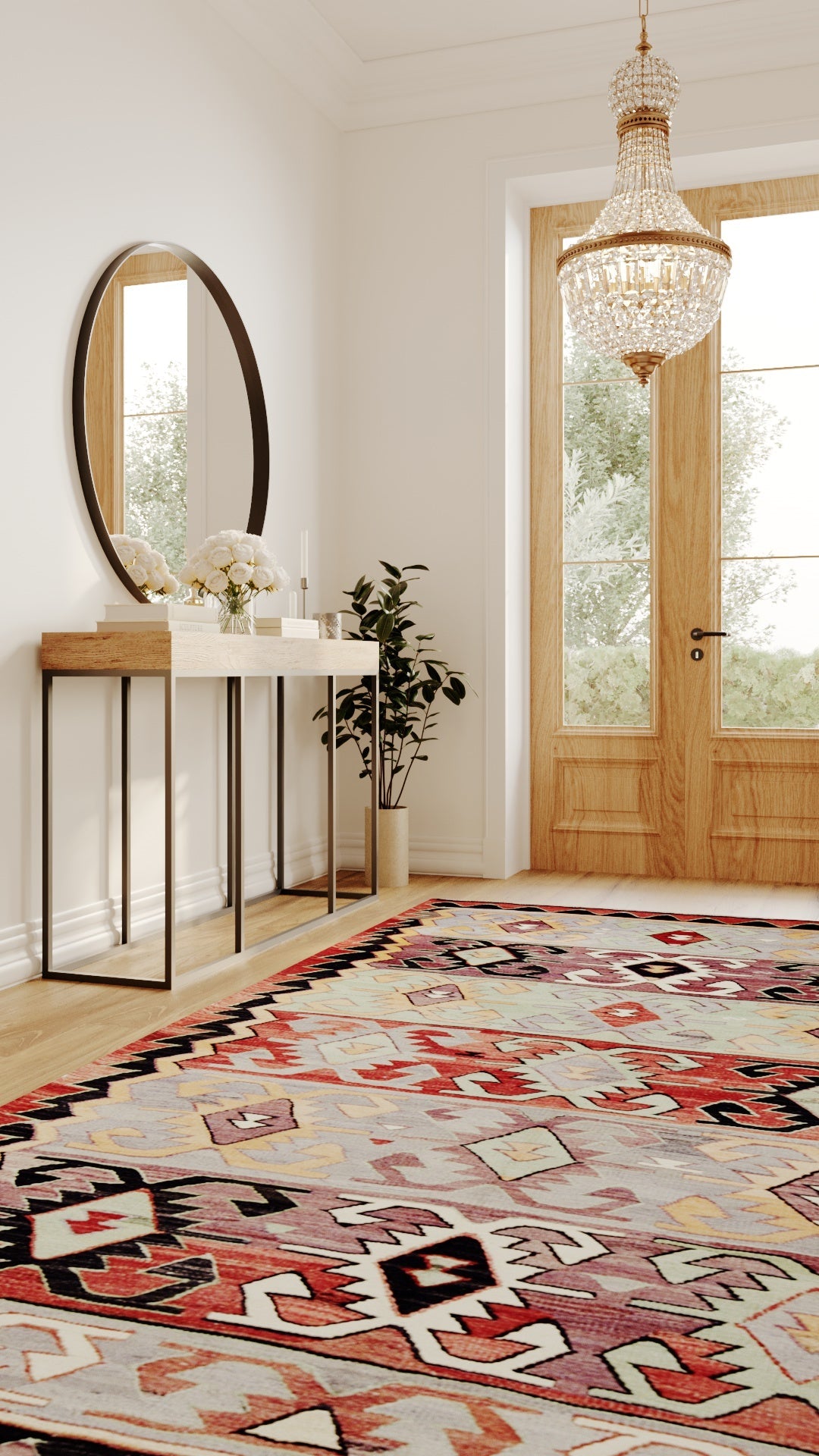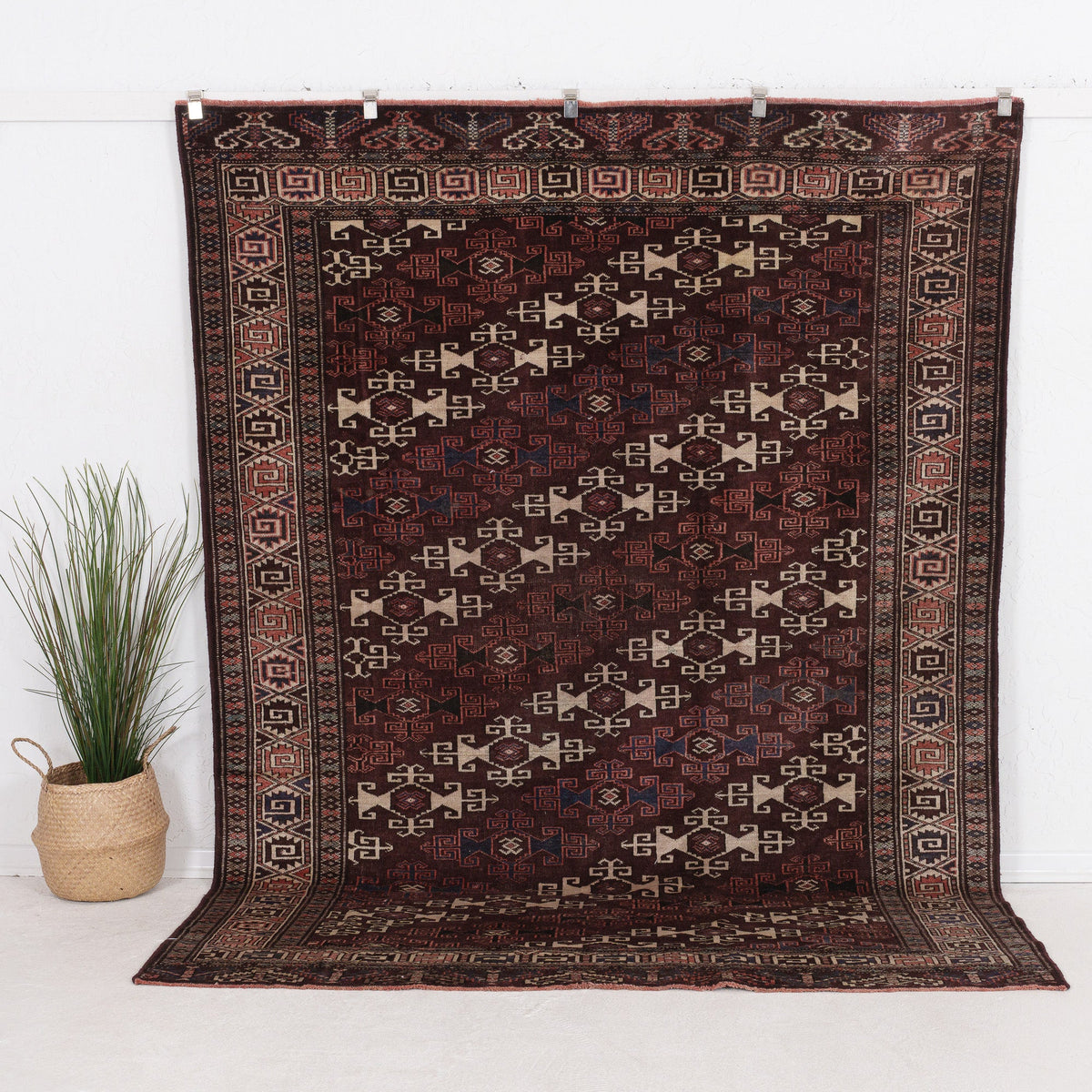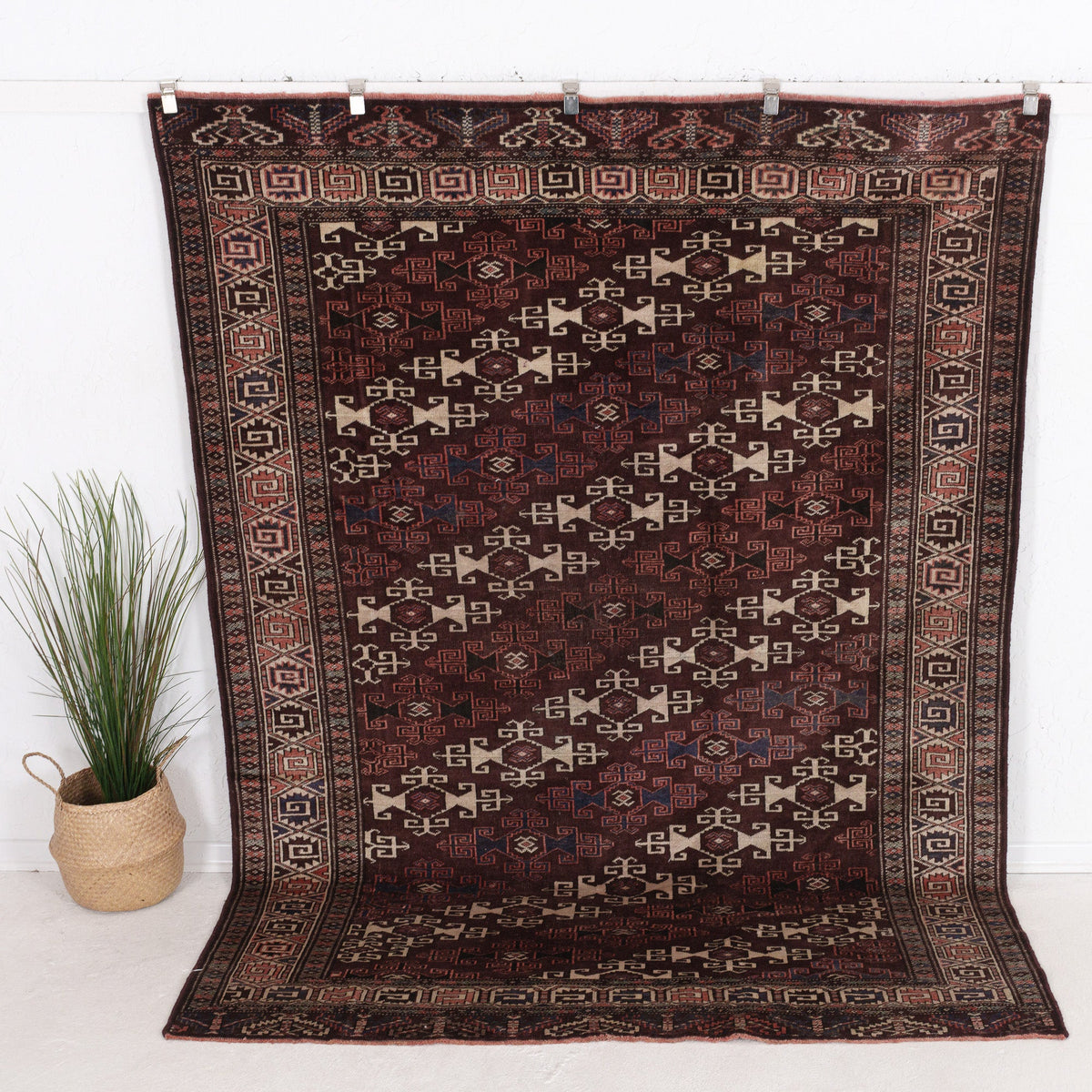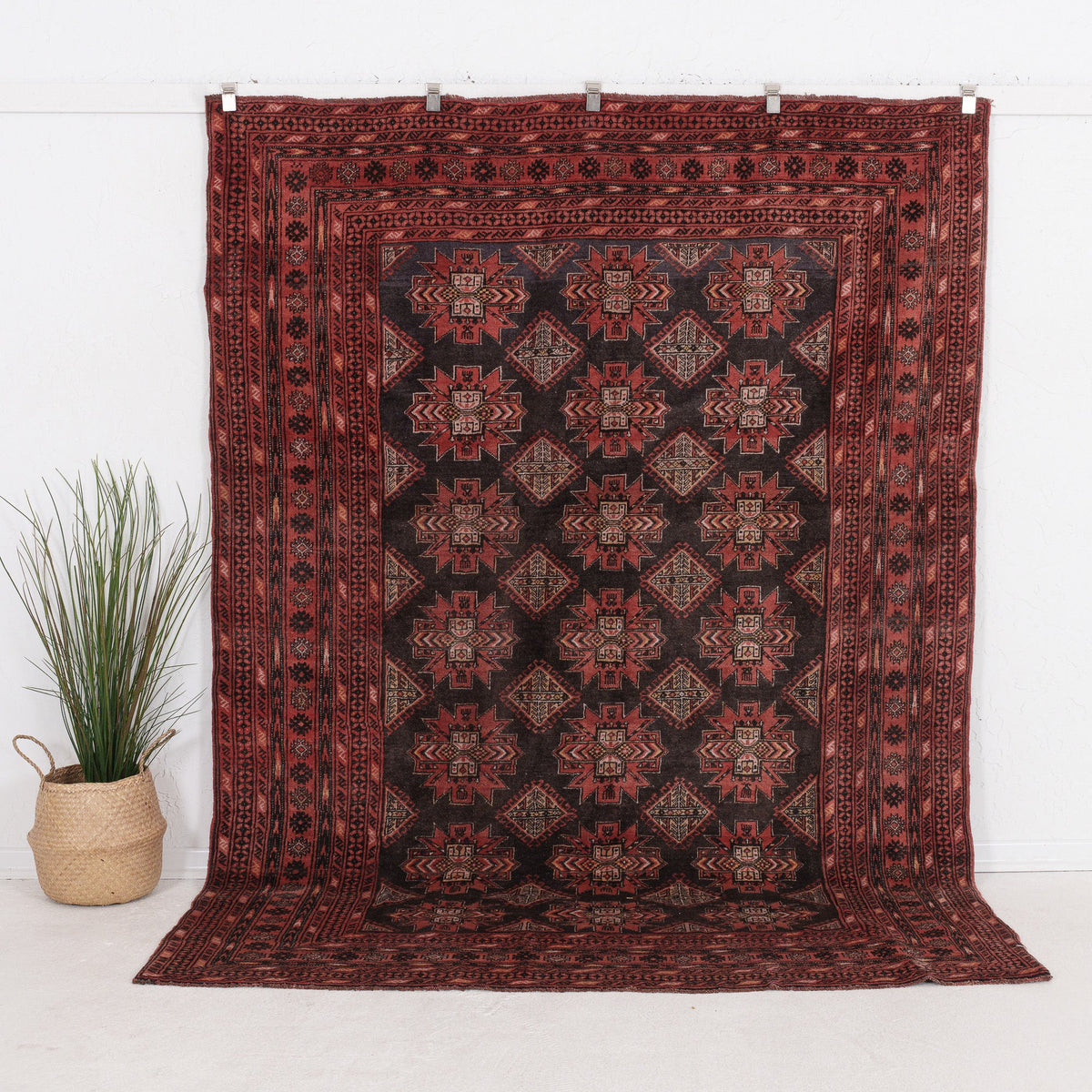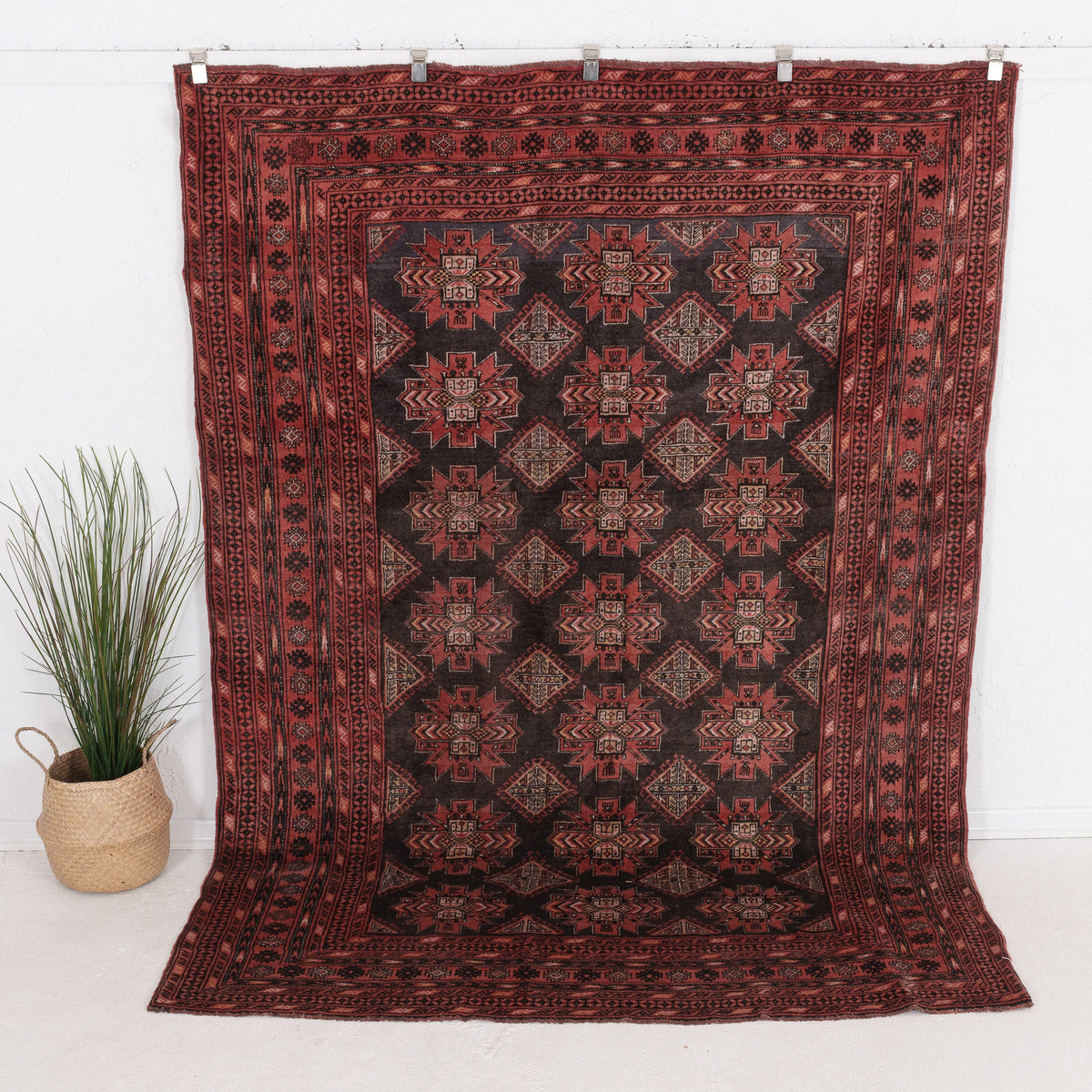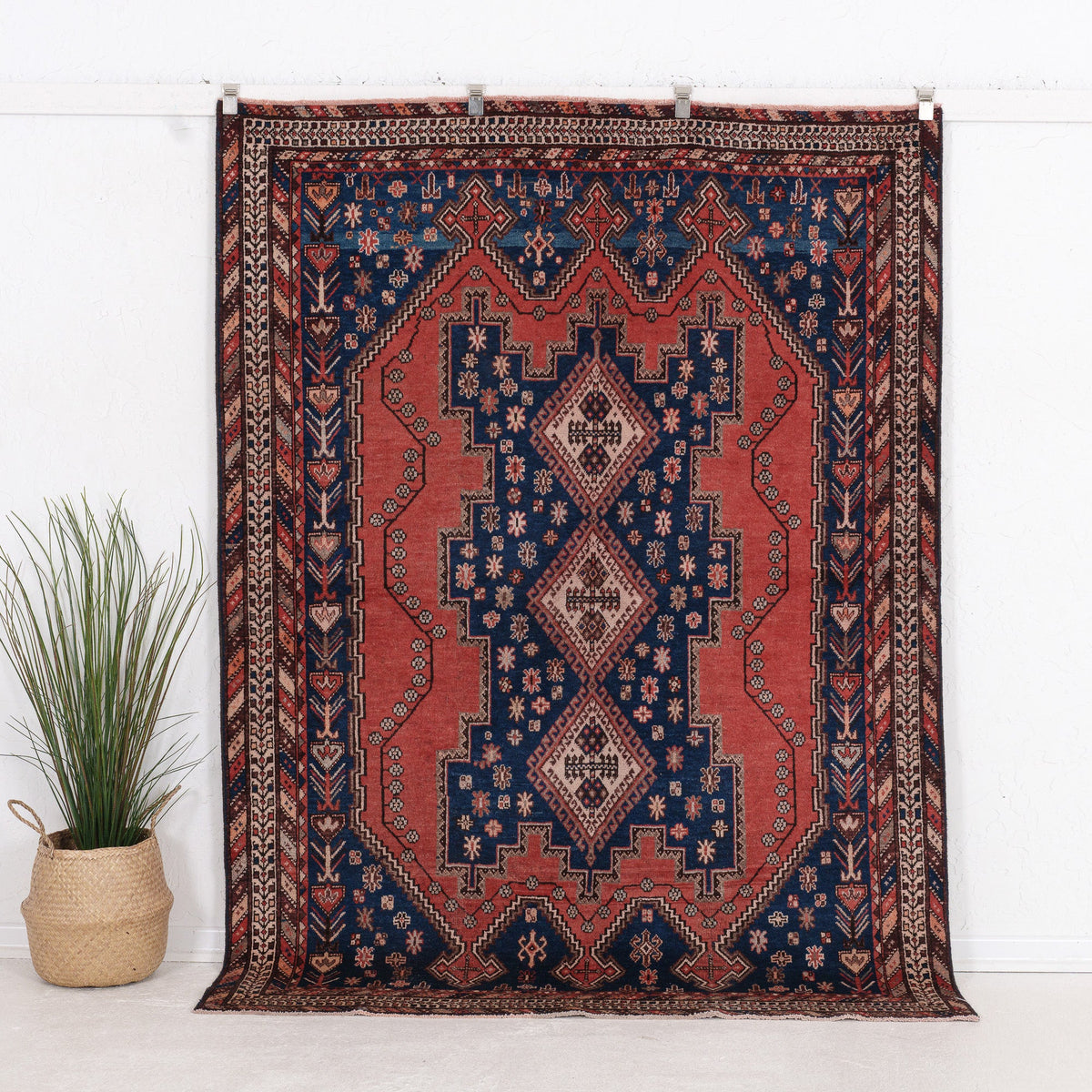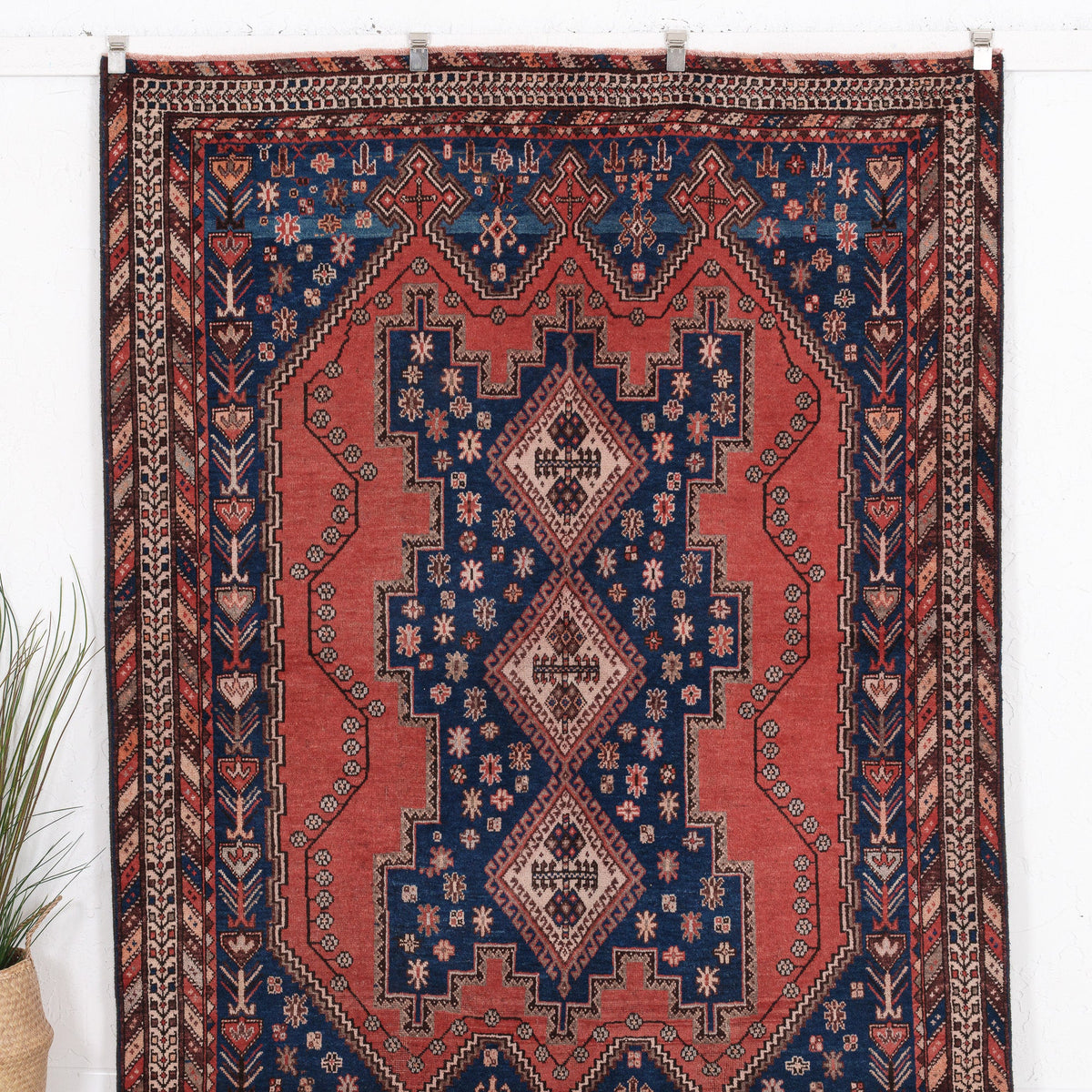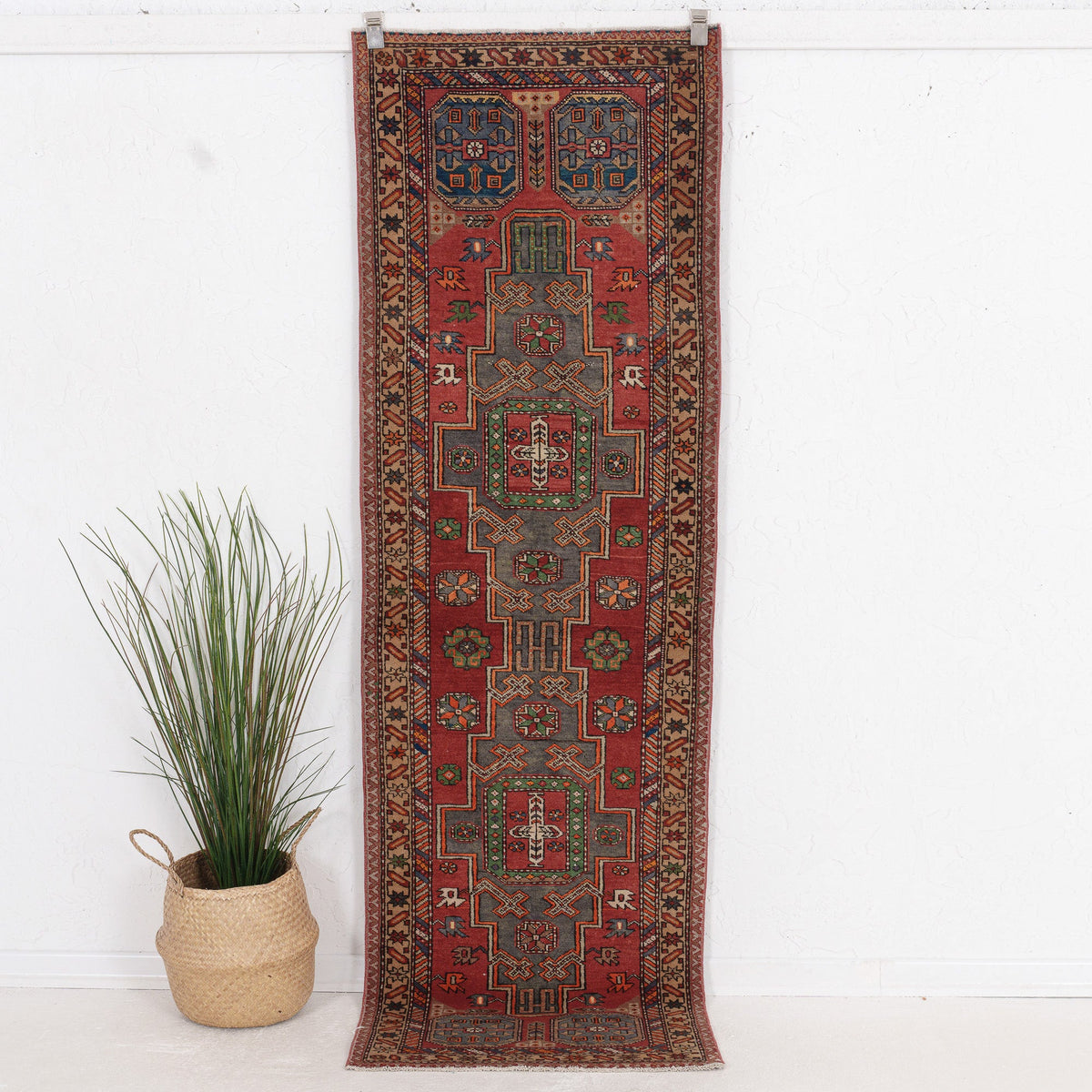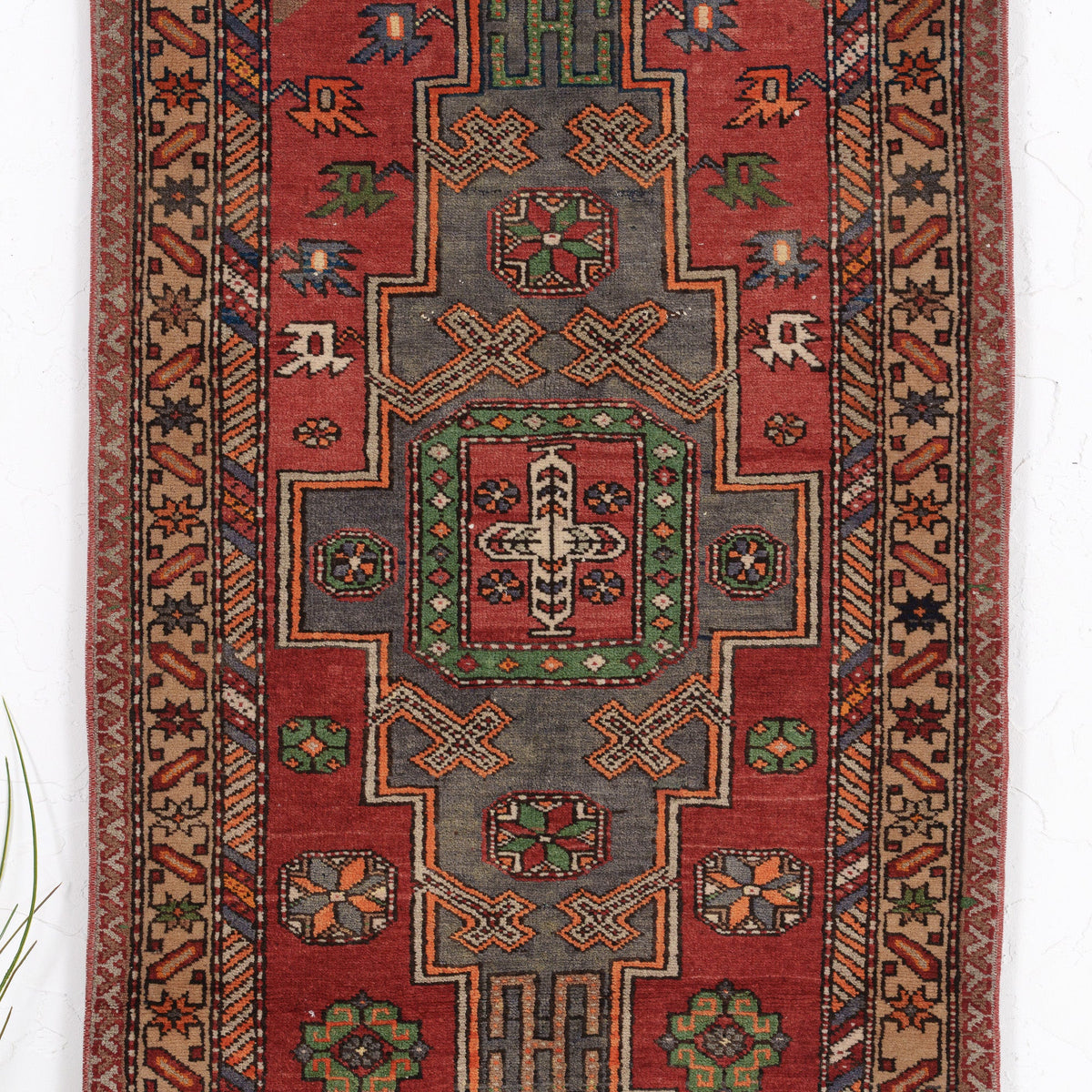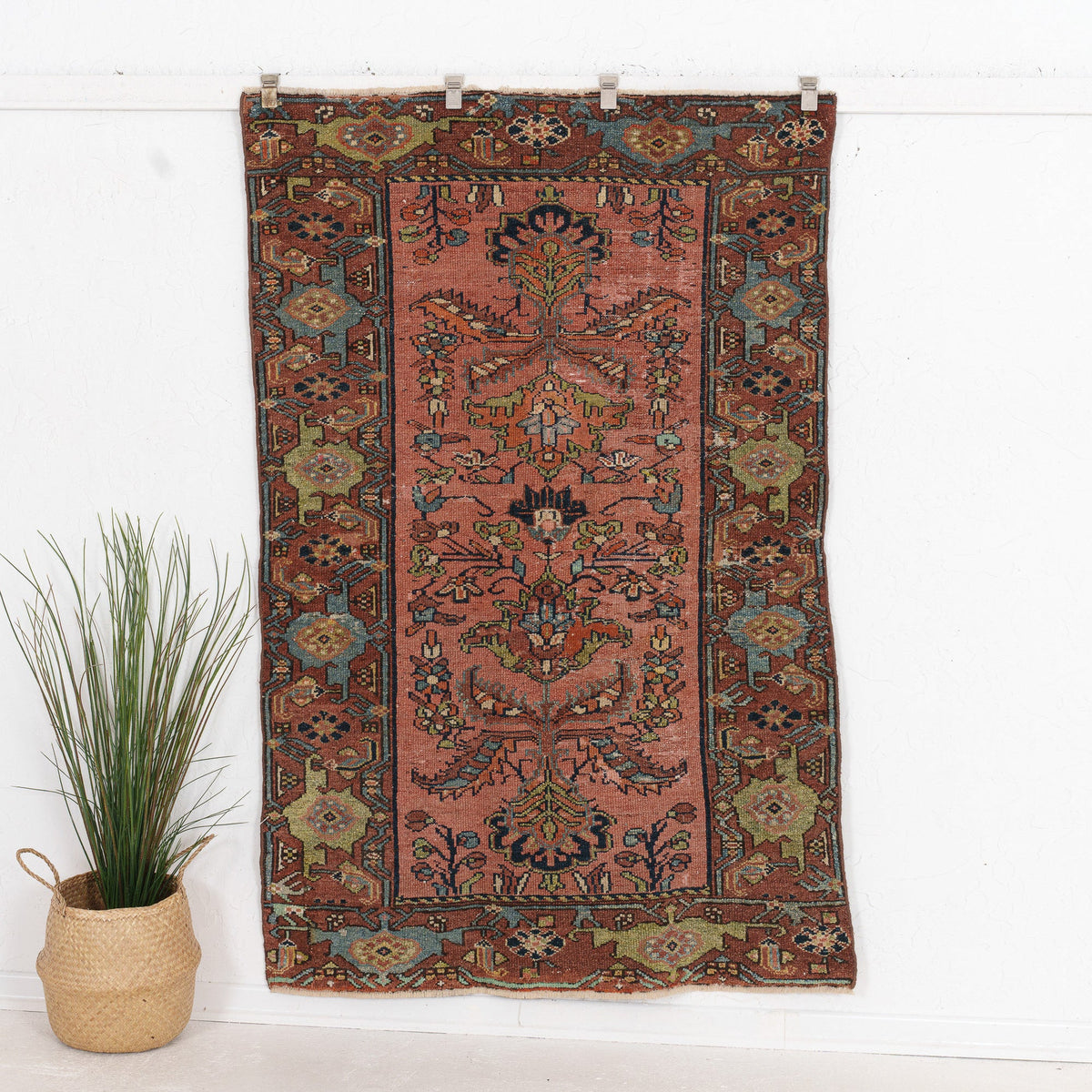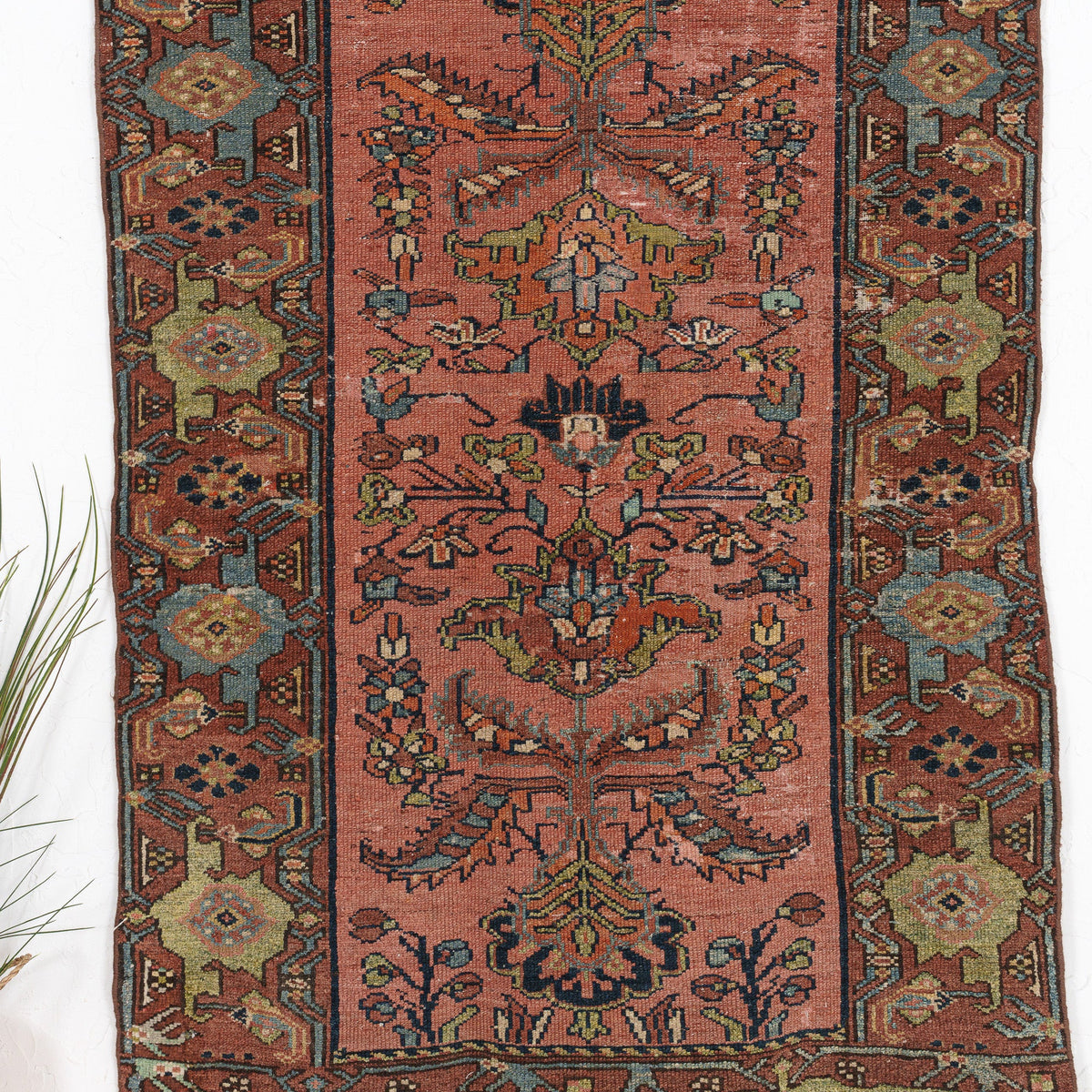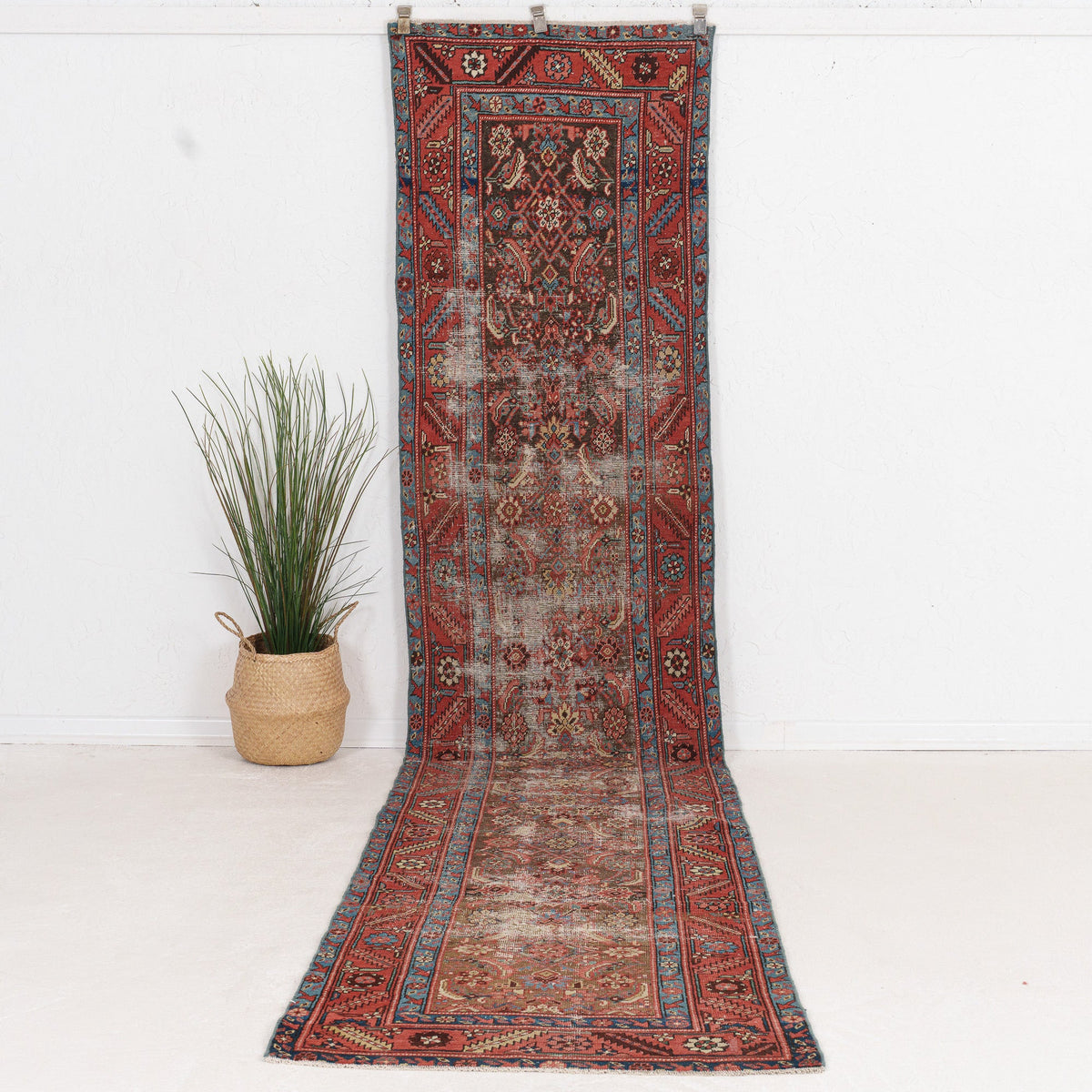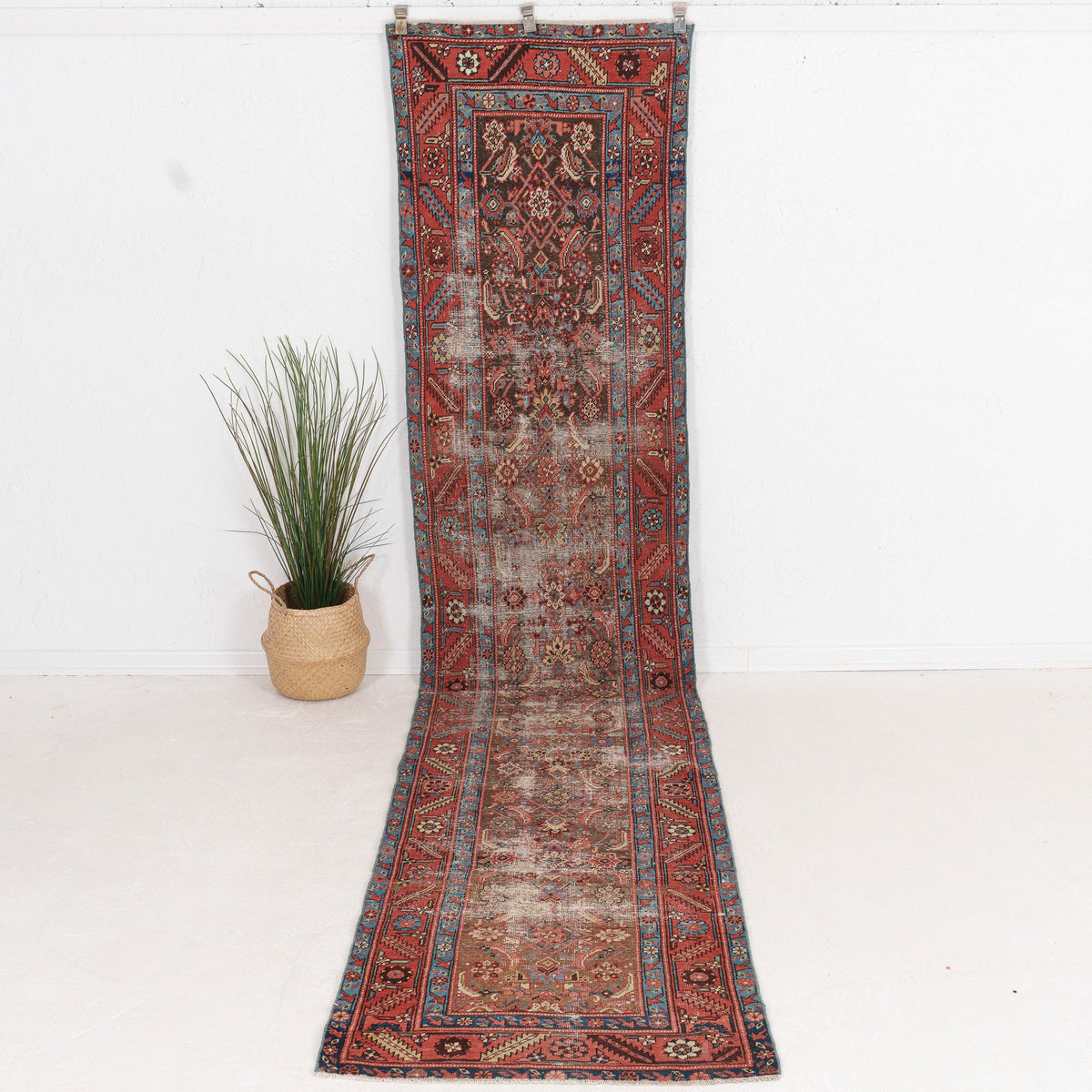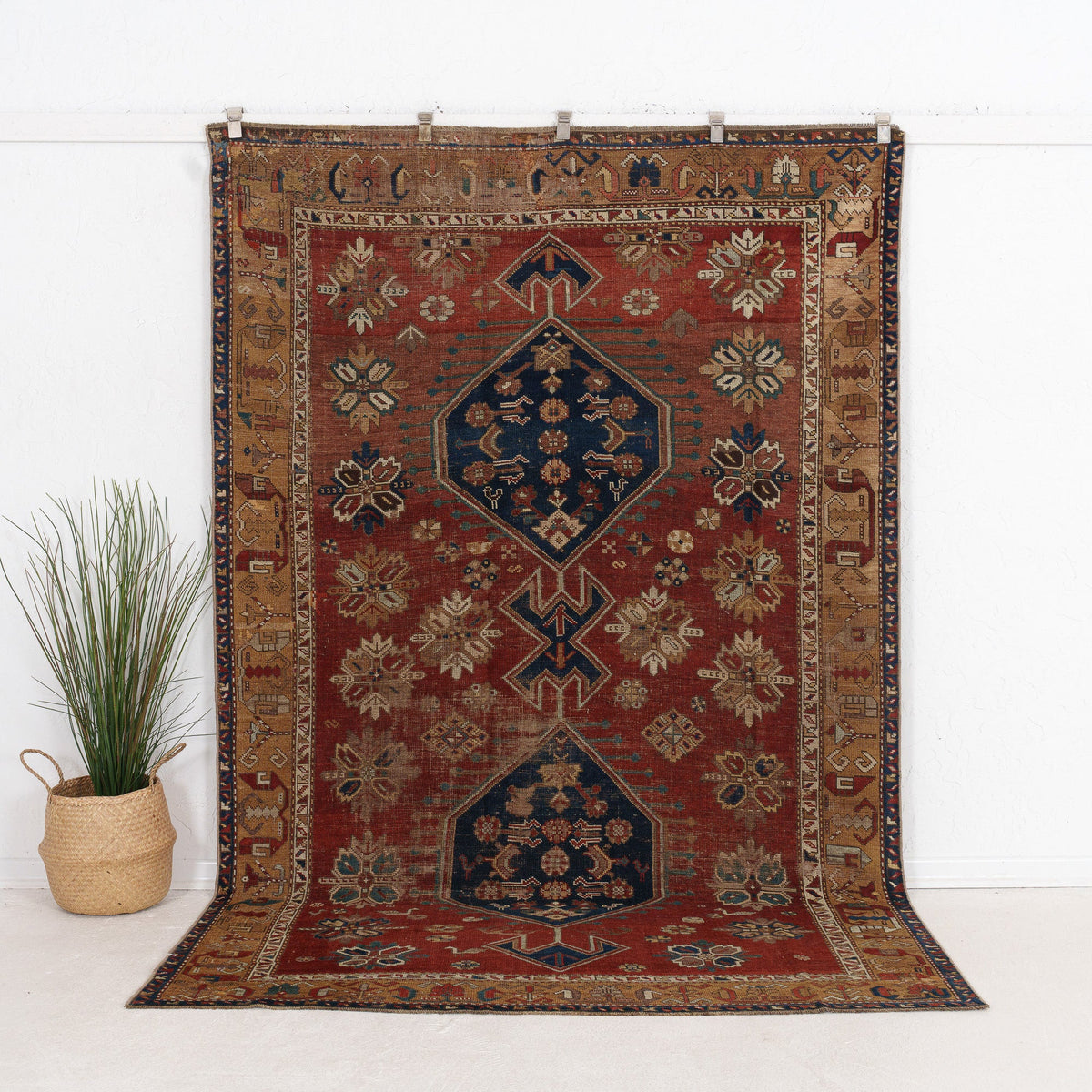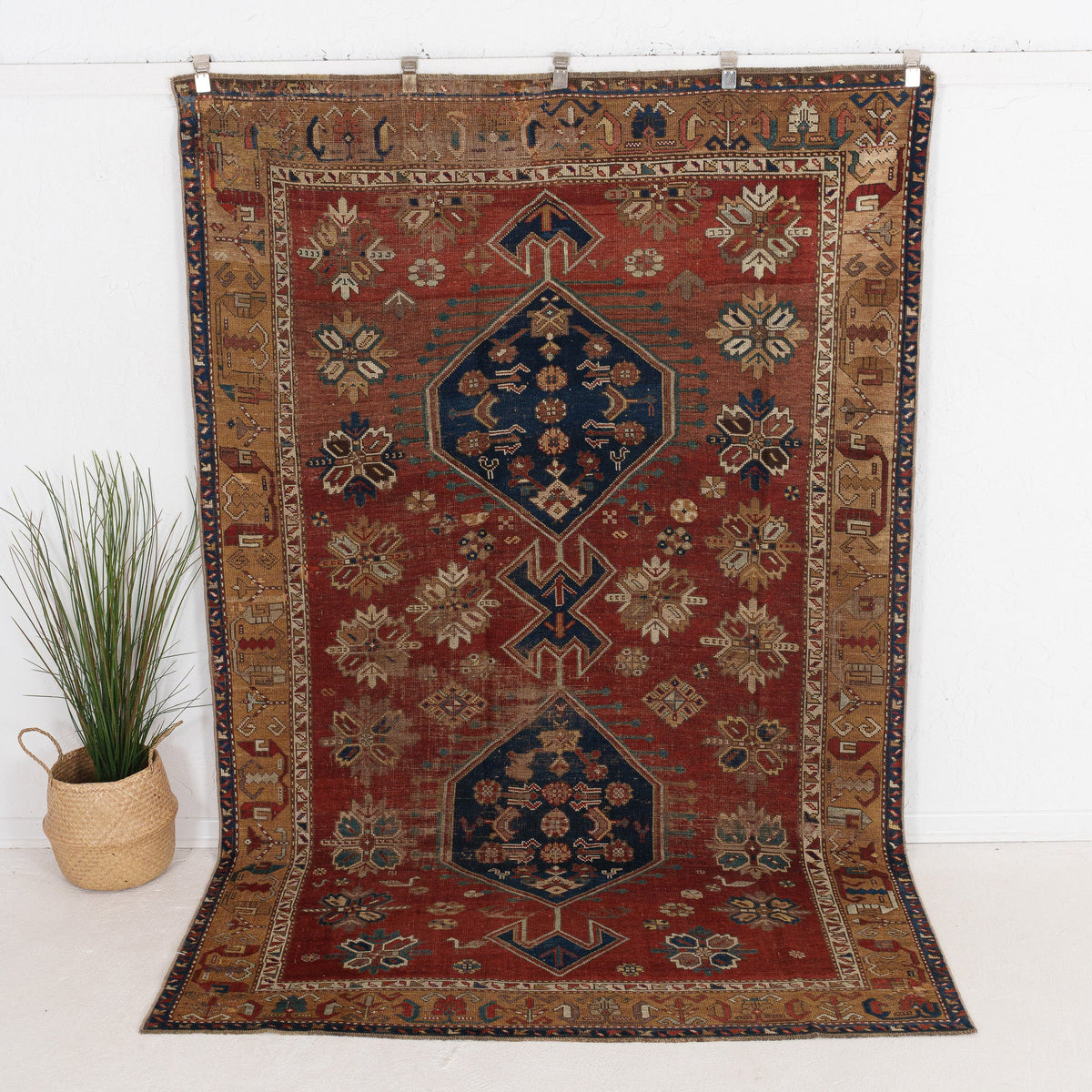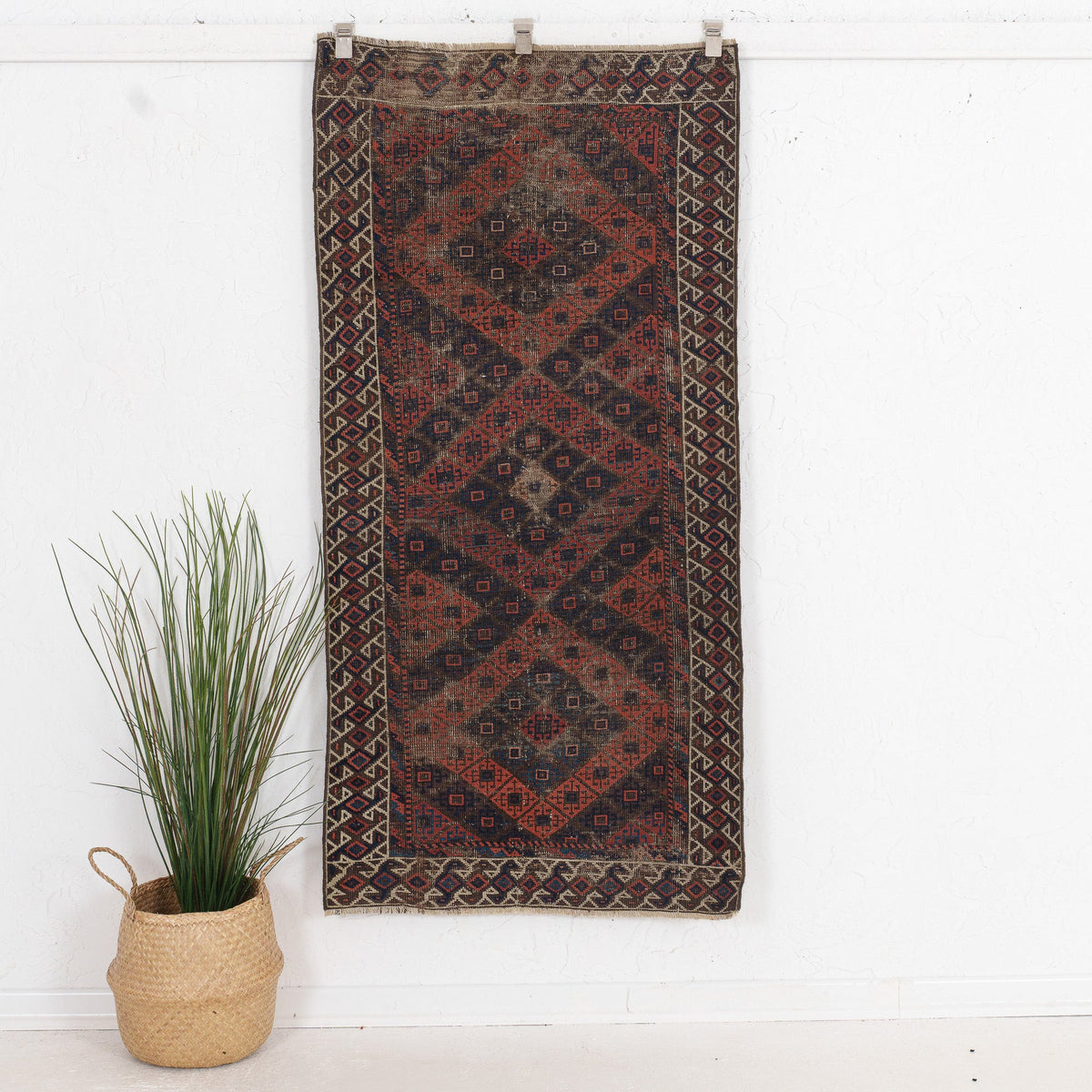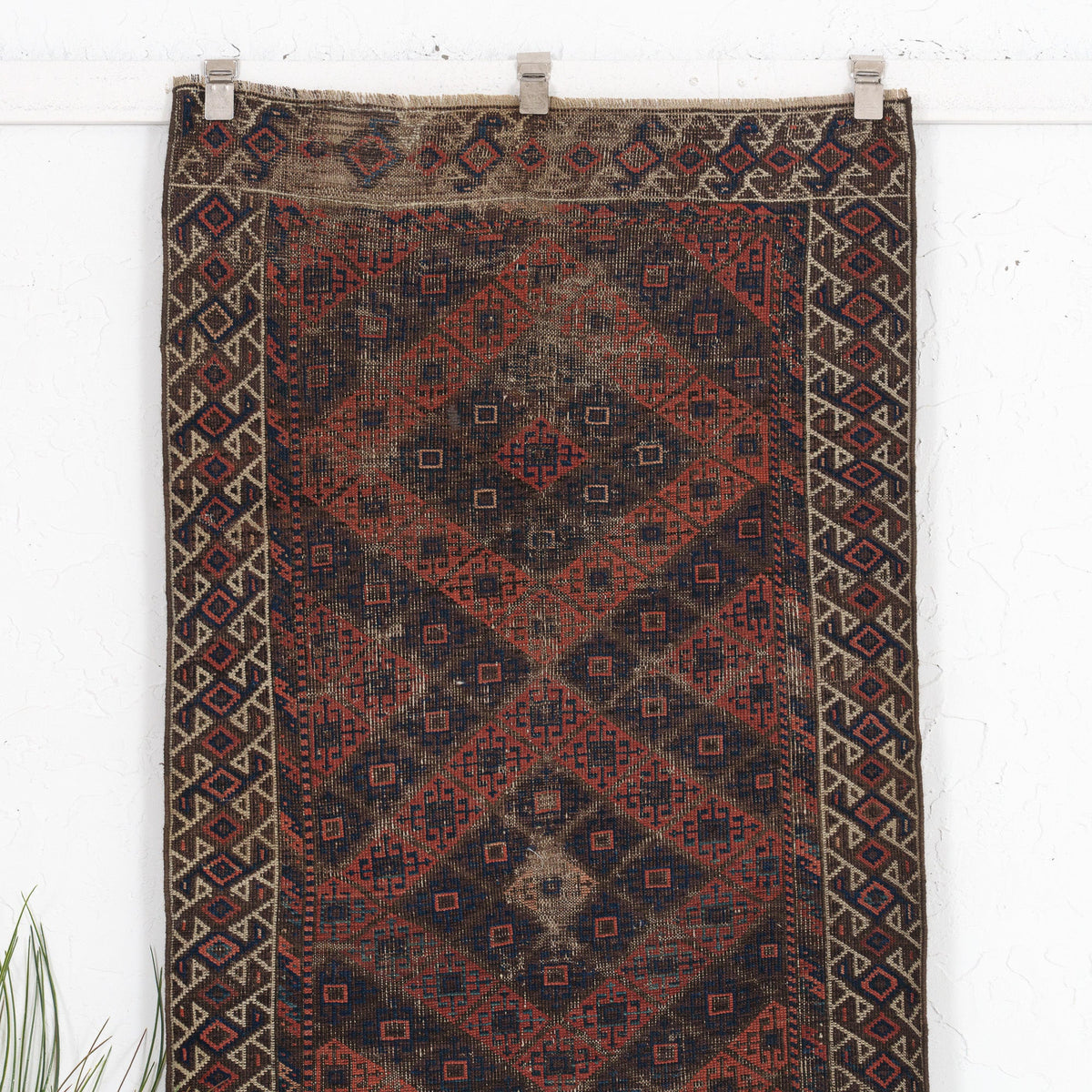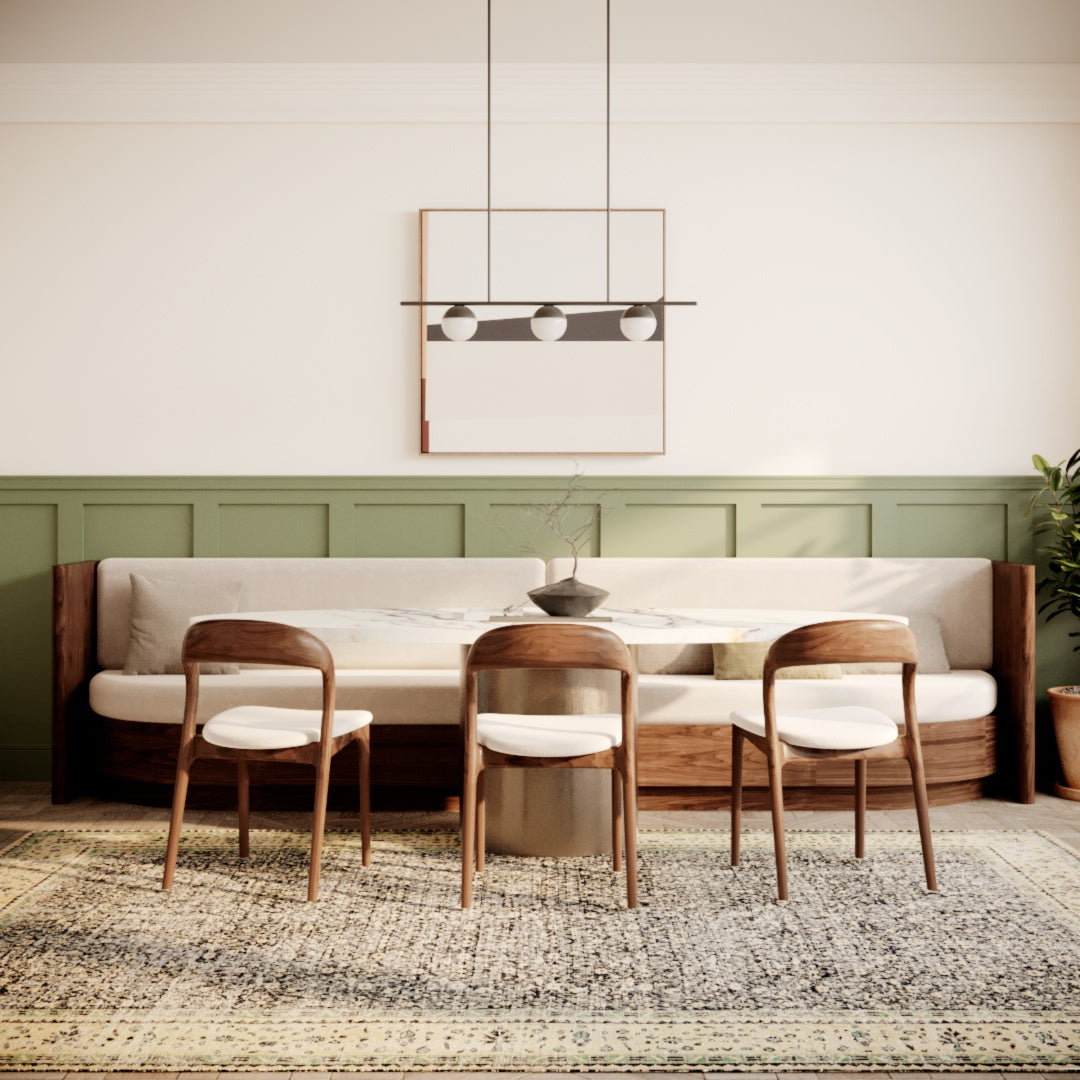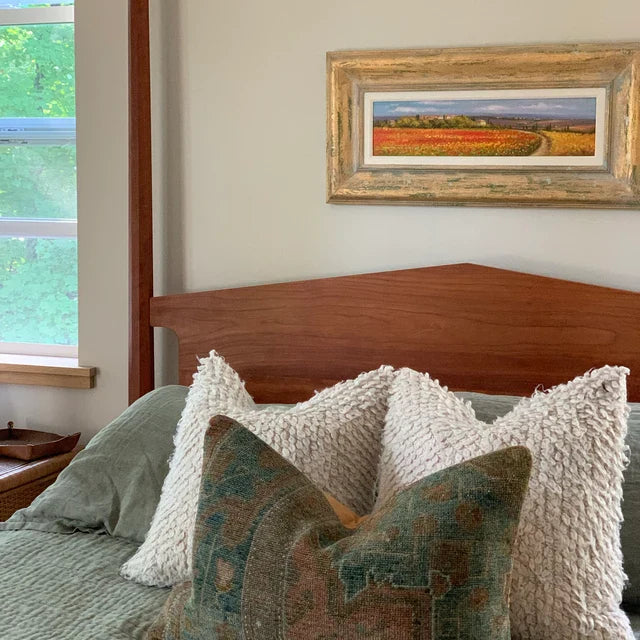Vibrant, eye-catching, and crafted with exquisite detail, oriental rugs continue to captivate despite the ever-evolving trends in interior design. With their rich selection of styles, sizes, and patterns, there's definitely an oriental rug to complement any room.
To better understand the appeal of these rugs, let’s first clarify what defines an oriental rug.
What Is an Oriental Rug?
Although "the Orient" may seem like a distant concept, it incorporates the rich tapestry of handcrafted carpets from different areas, like North Africa, the Middle East, and Central Asia.
Unlike their machine-made counterparts, oriental rugs are meticulously knotted or woven by hand. This traditional craftsmanship is apparent in details like fringes, which are essential to the rug’s structure rather than merely decorative add-ons, as is often the case with mass-produced rugs.
History of Oriental Rugs
A true Oriental rug is a carefully handwoven, heavy-pile carpet, created with exceptional skill.
While the exact origins of these rugs remain shrouded in history, the oldest known Oriental rug discovered intact is the Pazyryk rug.
Revealed in Siberia by a Russian archaeologist in the 1940s, this noteworthy piece has been dated back to the 5th century BCE, offering a peek into the ancient art of rug-making.
Types of Oriental Rugs
Regional and cultural traditions are deeply woven into the fabric of oriental rugs. The colors, patterns, and weaving techniques used in these rugs are key indicators of their origins, offering valuable clues for identifying types of oriental rugs.
Here are some of the most common and recognizable variants of genuine oriental rugs, each bearing the distinctive mark of the culture and region from which it hails.
Persian Rugs
Persian rugs, originating from the ancient Persian empire, are a testament to a revered tradition of hand weaving.
Greater Persia, which historically spanned regions including the Caucasus, West Asia, Central Asia, and South Asia, is now most closely associated with modern-day Iran. The oldest known carpet in existence is a Persian rug from the 5th century BC, underscoring the ancient roots and luxury of these textiles. Revered for their craftsmanship, Persian rugs were celebrated in Greek texts as early as 500 BC.
As a distinct subset of the broader category of oriental rugs, Persian rugs or Iranian carpets are known for their intricate handwoven techniques, passed down through generations of skilled artisans. The specific techniques and patterns often reflect regional traditions, and trained experts can often pinpoint the origin of a rug based on its unique patterns, markings, colors, and techniques.
Anatolian (Turkish) Rugs
Turkish carpets primarily originated from Anatolia and surrounding areas. They are a reflection of an ancient weaving tradition that captures the rich history of the Turkish people.
These carpets were crafted in a variety of settings, from professional workshops and provincial facilities to village homes, tribal settlements, and even by nomadic groups.
What distinguishes Turkish carpets from others is their use of primary colors, bold geometric designs, and stylized floral patterns, often arranged in a rectilinear fashion.
Each region in Turkey offers its own unique style, with popular variants including Ushak, Hereke, Kayseri, Bergama, Konya, and Milas.
The history of Turkish rugs is deeply rooted, with records dating back to the Seljuk Empire when Turks in 13th-century Anatolia began weaving their brightly colored carpets. A true Turkish rug must be woven in the region of the former Ottoman Empire or within modern-day Turkey, following the long-standing traditions of the area.
Rugs crafted outside of Turkey, even if they mimic the traditional patterns, symbols, or techniques, are considered inauthentic and do not hold the same cultural or monetary value.
Moroccan Rugs
Moroccan rugs enjoy a rich history that can be traced back to ancient times. Their art is rooted in the traditions of the Berber people, the native inhabitants of North Africa. These rugs were initially crafted using natural materials like wool, camel hair, and silk, which offer a blend of practicality with beauty.
The Berber people's deep connection to nature, their nomadic lifestyle, and a strong sense of community are all displayed in their rug-making traditions.
They believe that everything in nature possesses a spirit. According to their beliefs the rugs they weave carry the spirits of the animals, plants, and landscapes from which they are made.
To the Berbers, these rugs are imbued with protective qualities, offering warmth, comfort, and a spiritual link to the natural world.
Isfahan Rugs
Isfahan rugs are well-known for their exceptional knot density. It allows for incredibly detailed and high-quality designs. These rugs often contain complex floral patterns set against a cream or ivory background, with elegant accents of bold shades.
The city of Isfahan served as the Iranian capital during the 16th and 17th centuries. It has remained a substantial cultural and artistic hub ever since. Its rug ateliers produce some of the finest workshop rugs, showcasing gorgeous craftsmanship.
The elaborate patterns of Isfahan rugs are inspired by the ornate tile work found in local mosques or the lush florals from the city’s extensive gardens. These rugs are methodically tight-knotted, with some containing as many as a million knots, making them far more than just floor coverings—they are true works of art for your floors.
Indian and Pakistani Rugs
Indian and Pakistani rugs have a rich history that dates back to the 16th century during the Mughal Empire.
It is believed that the art of rug weaving in this region was influenced by Persian culture. Because the procedures and designs bear a resemblance to those of Persian rugs.
The early rugs from this era are characterized by large floral motifs with broad leaves set against vibrant red fields. These designs often reflected natural floral patterns rather than ornamental interpretations.
In modern times, the rugs produced in India and Pakistan are still influenced by designs and patterns from other cultures. As a result, these rugs are more often valued for their practicality rather than for their monetary or collectible worth.
India and Pakistan, which became separate nations following the Partition of India in 1947, share a deeply entangled history of rug weaving. Although originally influenced by Persian and Central Asian designs, India eventually developed its own distinctive style, sometimes referred to as “Indo-Persian” because of their similarities with Persian carpets.
However, the decline of the Mughal Empire in the late 19th century also led to a decline in carpet weaving in India.
To revive the craft, the British colonial administration established carpet factories, sometimes even within prisons, to produce rugs for export.
Today, both India and Pakistan produce rugs, although modern production often involves the replication of foreign designs, leading to rugs that are primarily valued for their functionality rather than as collectible pieces.

Caucasian Rugs
The northern territories of the Safavid Empire of Persia, which included Karabagh, Moghan, Shirvan, Daghestan, and Georgia, fell under Russian control through the Treaty of Constantinople in 1724 and the Treaty of Gulistan in 1813. Russian rule eventually spread to other regions like Baku, Genje, the Derbent Khanate, and the Talish region.
In the early 17th century, Shah Abbas I of Persia established carpet manufactories in Shirvan and Karabagh, influencing the weaving traditions of the Caucasus region.
The carpet weavers there adopted the Safavid style, integrating field divisions and floral motifs. But they also infused these designs with their own ancient traditions.
This the led to formation of distinct motifs such as stylized Chinese dragons in the "Dragon carpets," combat scenes featuring tigers and stags. Plus, it included highly abstract floral patterns where animal forms often became unrecognizable.
Among the most sought-after groups of Caucasian rugs are the "Kazak" carpets, known for their tribal designs, geometric motifs, and bold color schemes.
These rugs, woven in the Caucasus region, are highly preferred among both dealers and designers. They are often admired for their striking patterns and rich cultural heritage.
Turkmen Rugs
The Turkmen tribes lived near the borders of present-day Iran and Afghanistan. They are renowned for their intricate rugs and smaller woven items. These tribes maintained much of their traditional culture, resisting assimilation more than their neighbors.
The history of the Turkmen is marked by migrations, alliances, intertribal warfare, and even the violent extinction of some regional populations. Understanding the history and migrations of a specific Turkmen tribe, along with the distinct characteristics of their rug designs and structures, is key to accurately attributing a rug or woven item to a particular tribe and period.
A hallmark of Turkmen rugs is the use of madder red, a locally sourced dye that was used to create various shades and is prevalent in nearly all Turkmen carpets.
Over time, the commercialization of Turkmen designs led to the production of carpets for export in Pakistan and Afghanistan.
These rugs, known in the trade as "Bokhara rugs," draw inspiration from traditional Turkmen carpets. However, the colors and quality of design often fall short of the originals, reflecting the differences in craftsmanship and material quality.
Chinese Rugs
Ancient Chinese rugs boast a history extending over two millennia, with the craft of rug weaving becoming a prominent industry by the mid-18th century.
Unlike nomadic rugs, Chinese carpets are created in factories or organized workshops, presenting a distinct array of colors and motifs that set them apart from other Oriental rugs, such as Persian ones influenced by Islamic culture.
Chinese rugs are adorned with traditional Buddhist and Taoist themes, featuring intricate designs of branches, leaves, animals, birds, and thoughtfully crafted garden scenes.
Floral motifs often include lotus, daffodil, and peony, while dragons and pomegranates add a touch of symbolism. The color palette is rich and varied, encompassing shades like yellow, peach, apricot, brown, olive green, and blue.
The range of Chinese rugs is one of the most incredible types of oriental carpets. It spans from classic antique designs reflecting deep cultural heritage to vibrant Art Deco pieces characterized by striking contrasts and bold patterns. Art Deco Chinese rugs, in particular, are experiencing a surge in popularity, showcasing the evolving creativity and appeal of this ancient craft
Kilim Rugs
Kilims, with origins tracing back to the early Persian Empire, hold a cherished place in the tradition of Oriental rugs.
These carpets are distinguished by their flatweave construction, achieved through a unique weaving technique where the weft threads, spun looser than the warp, create intricate patterns by covering the warp threads completely. Color changes result in vertical slits that form diagonal, stair-like designs.
Popular for their vibrant patterns and colors, modern Kilim rugs are perfect for adding visual interest to any room. Unlike pile carpets, Kilims are flat-woven and crafted mainly on vertical looms using a warp-wrapping technique.
Often referred to as such Kilims, these rugs are virtually reversible, although there is typically a preferred side. The wool used in Kilims is dyed with a blend of hand-gathered natural dyes and commercially farmed dyes like cochineal and indigo, showcasing the natural colors of wool from dhumba sheep.
How to Choose the Right Oriental Rug for Your Space?
It’s essential to consider the following factors when selecting an Oriental rug. It will help you ensure that the carpet complements your interior and meets your needs. You can also visit the Kuden Rugs website to explore oriental rugs like none other,
Style and Design
You should carefully analyze the existing decor of your room. In case you have a traditional or classic interior, a Persian or Turkish rug with elaborate floral designs might be ideal.
While, for more contemporary settings, a Caucasian rug with bold geometric patterns or an Oushak rug with a softer palette could work well.
Size and Placement
Before getting a rug, measure the space where you plan to place the rug. You should place larger rugs in living rooms and dining areas. In contrast, smaller rugs work exceptionally well in entryways, kitchens, or as accents.
Material
You must also consider the rug material based on how you intend to use it. Wool rugs are durable and ideal for high-traffic areas, while silk rugs are best for low-traffic spaces due to their delicate nature.
Budget
Oriental rugs come in a wide range of prices. From affordable machine-made versions to expensive hand-knotted masterpieces, you’ll find one based on your preferences. Fix your budget beforehand and choose accordingly.
Authenticity
Make sure you are buying an authentic Oriental rug from trustworthy dealers. Check for signs of handmade quality, such as irregularities in the design and natural dyes.
Oriental rugs are timeless pieces that add warmth, elegance, and character to any space. Understanding the different types—allows you to appreciate their distinct patterns, craftsmanship, and historical significance.
Choosing the right Oriental rug involves considering your style, space, budget, and the authenticity of the rug.
By investing in an Oriental rug, you're enhancing your decor; and embracing a rich tradition that transcends time and geography. You can check out the collection of quality rugs at Kuden Rugs as well.

